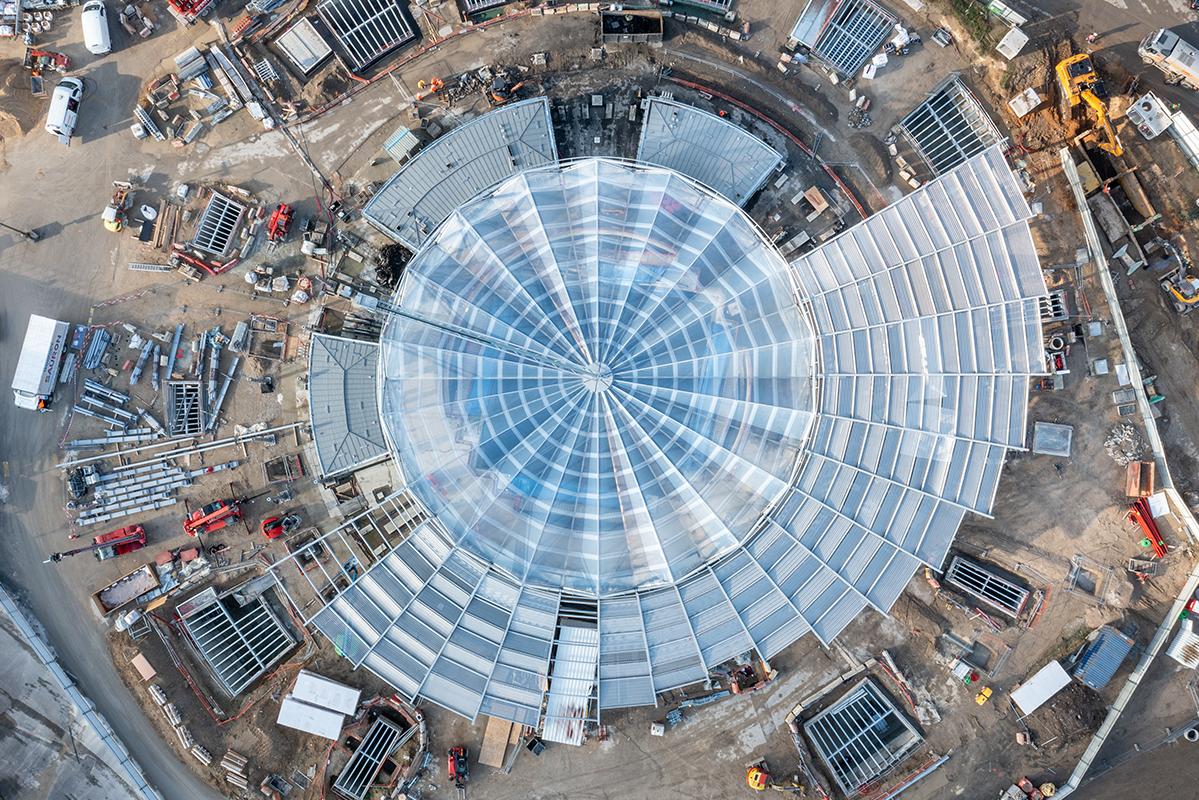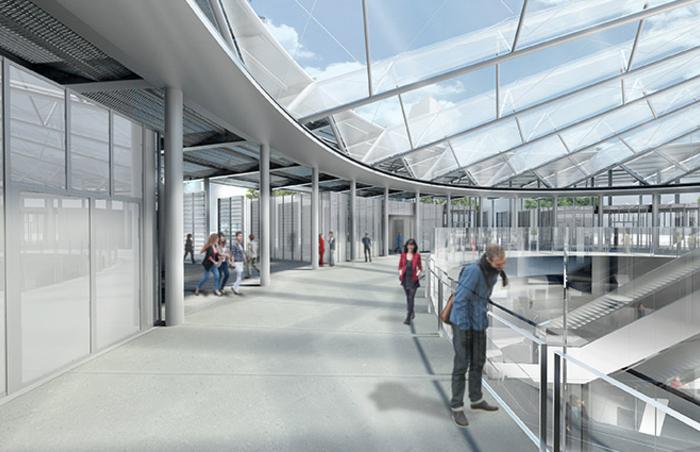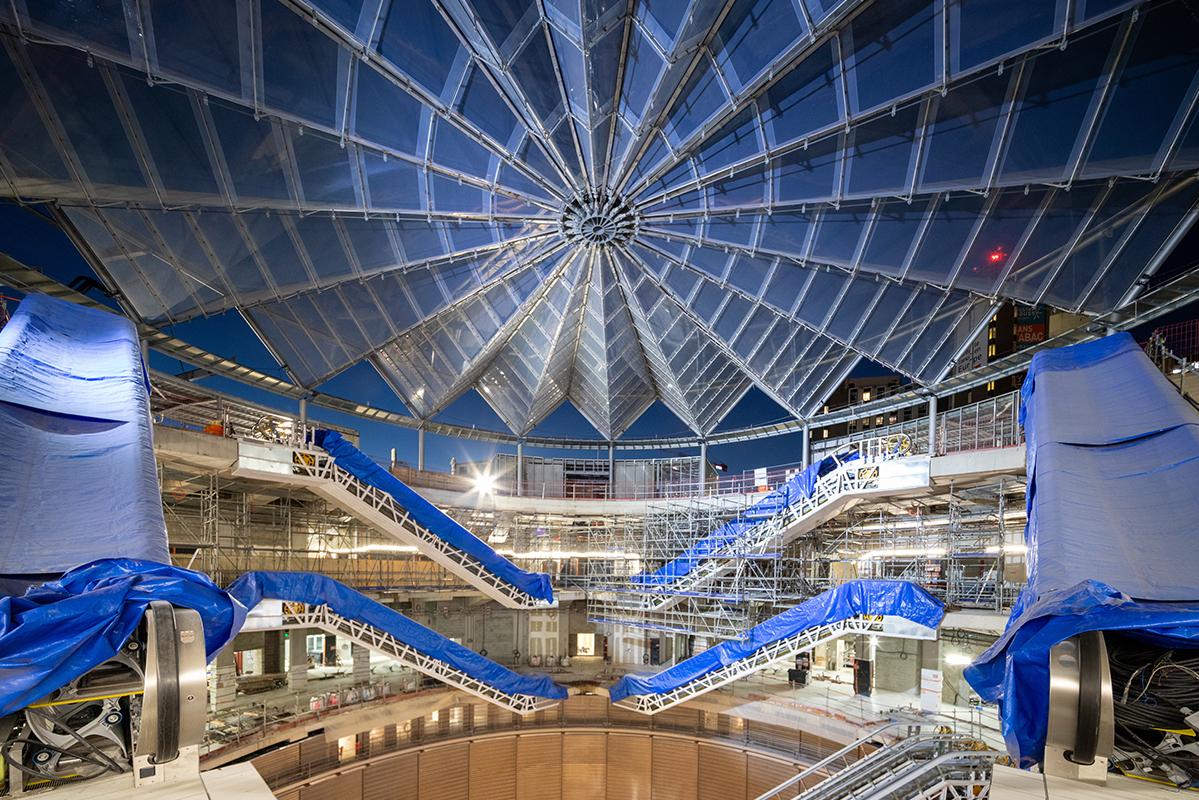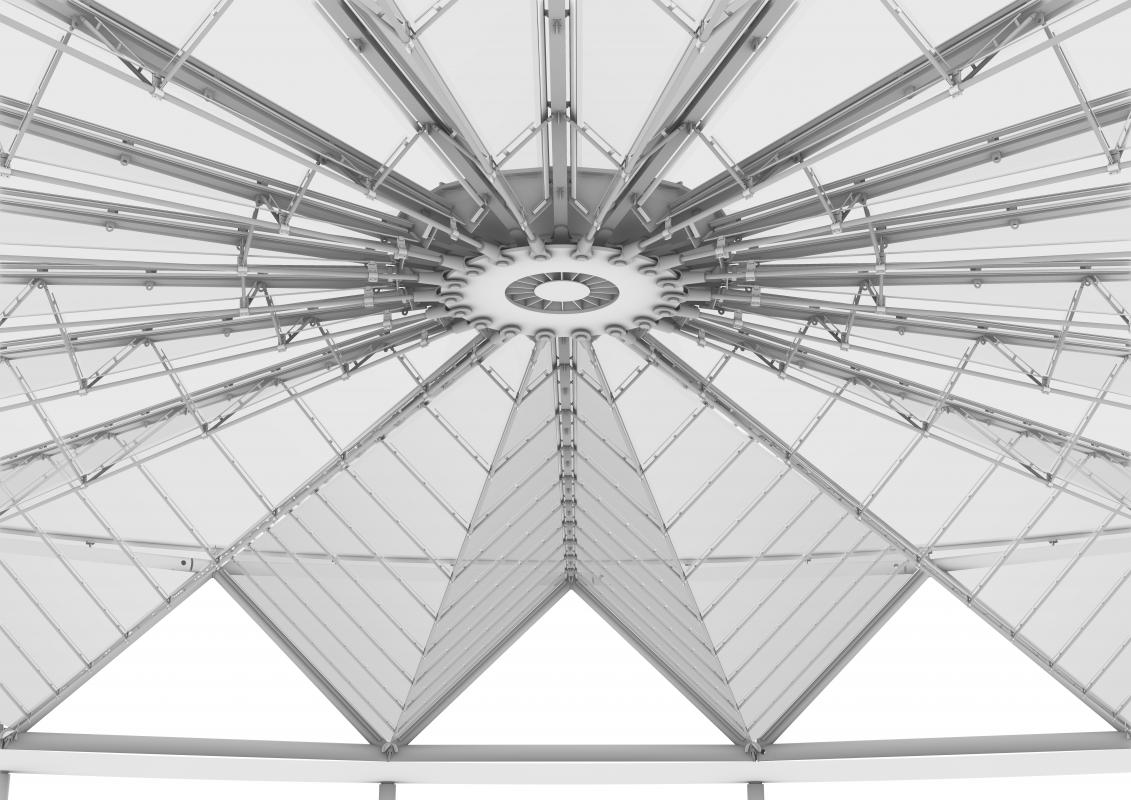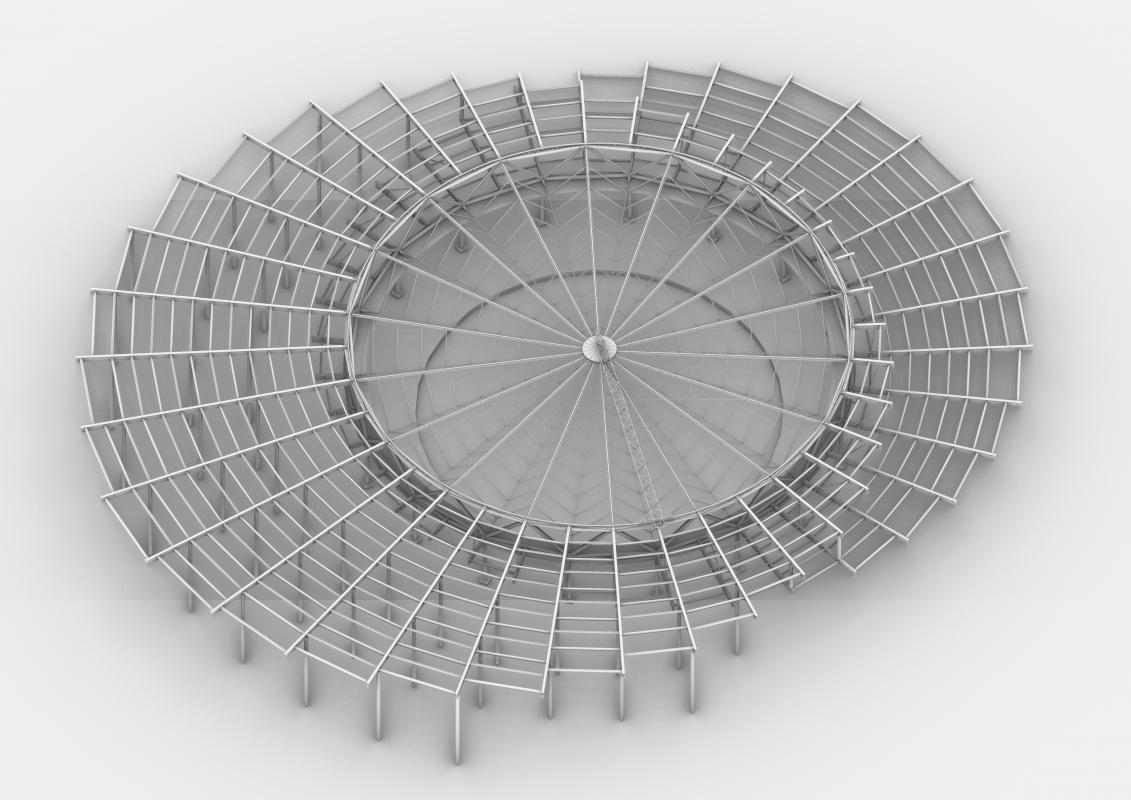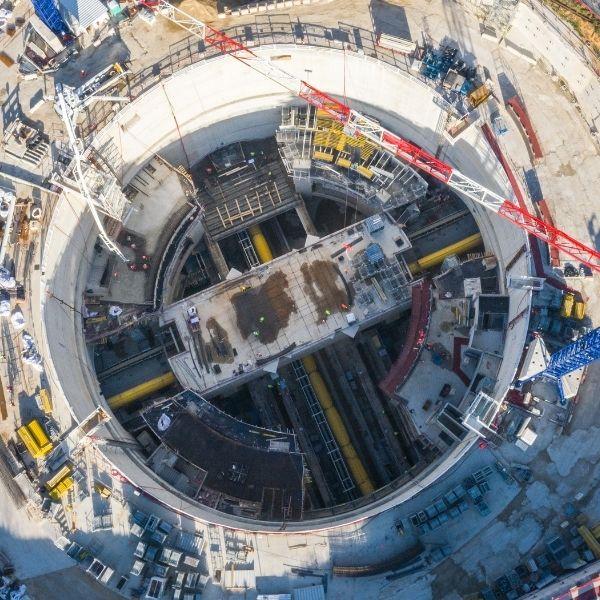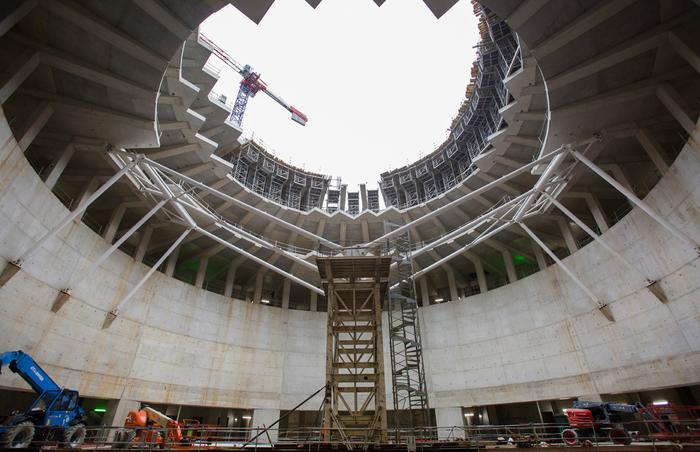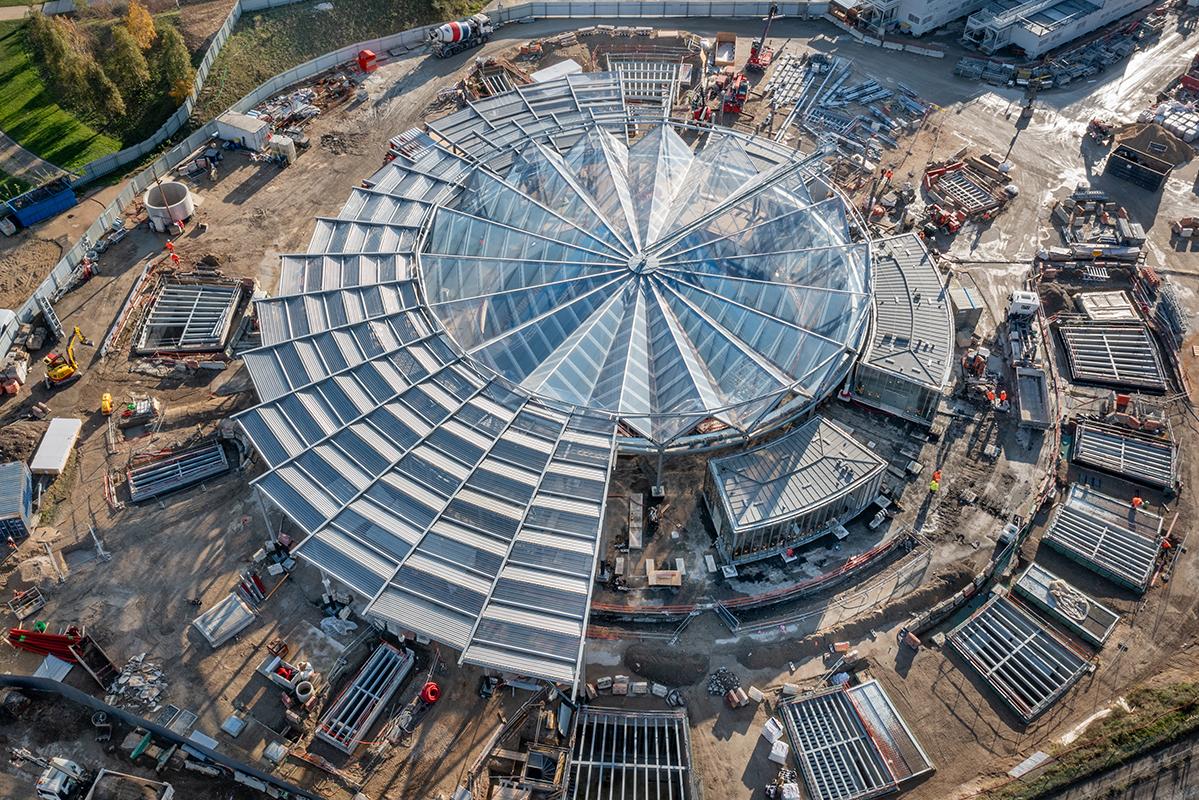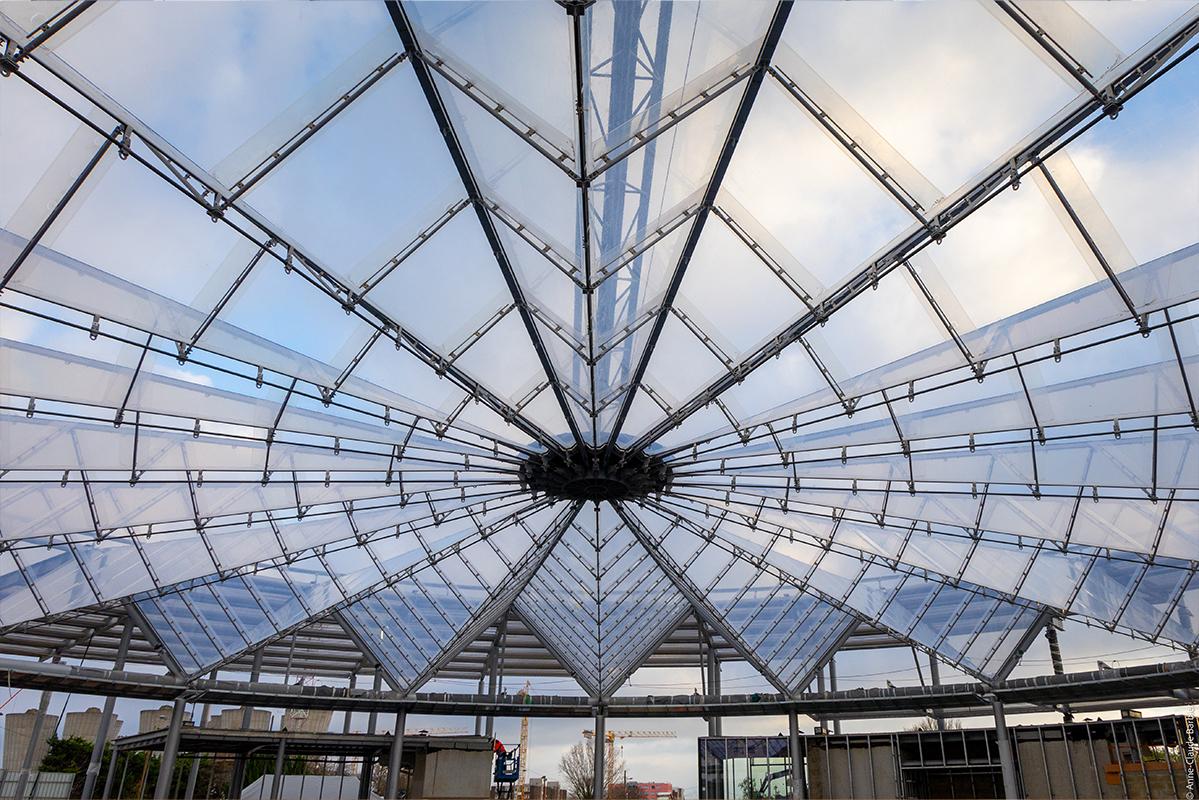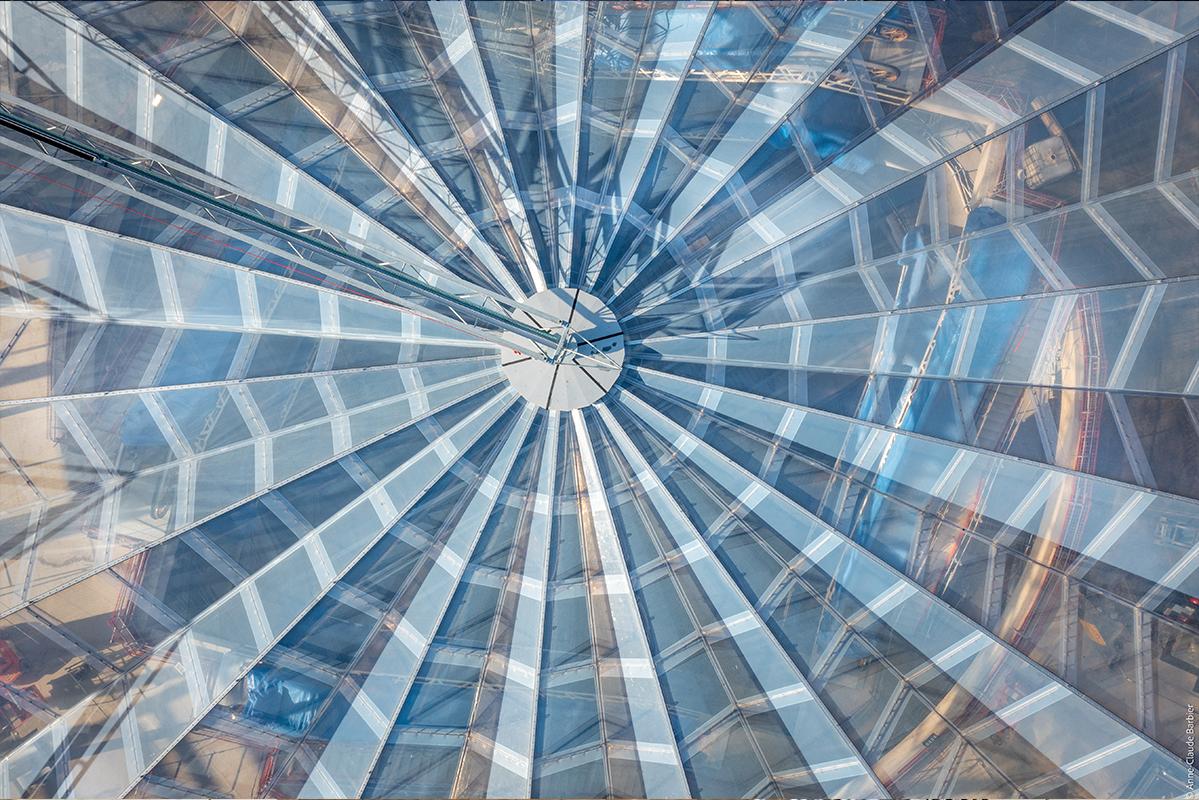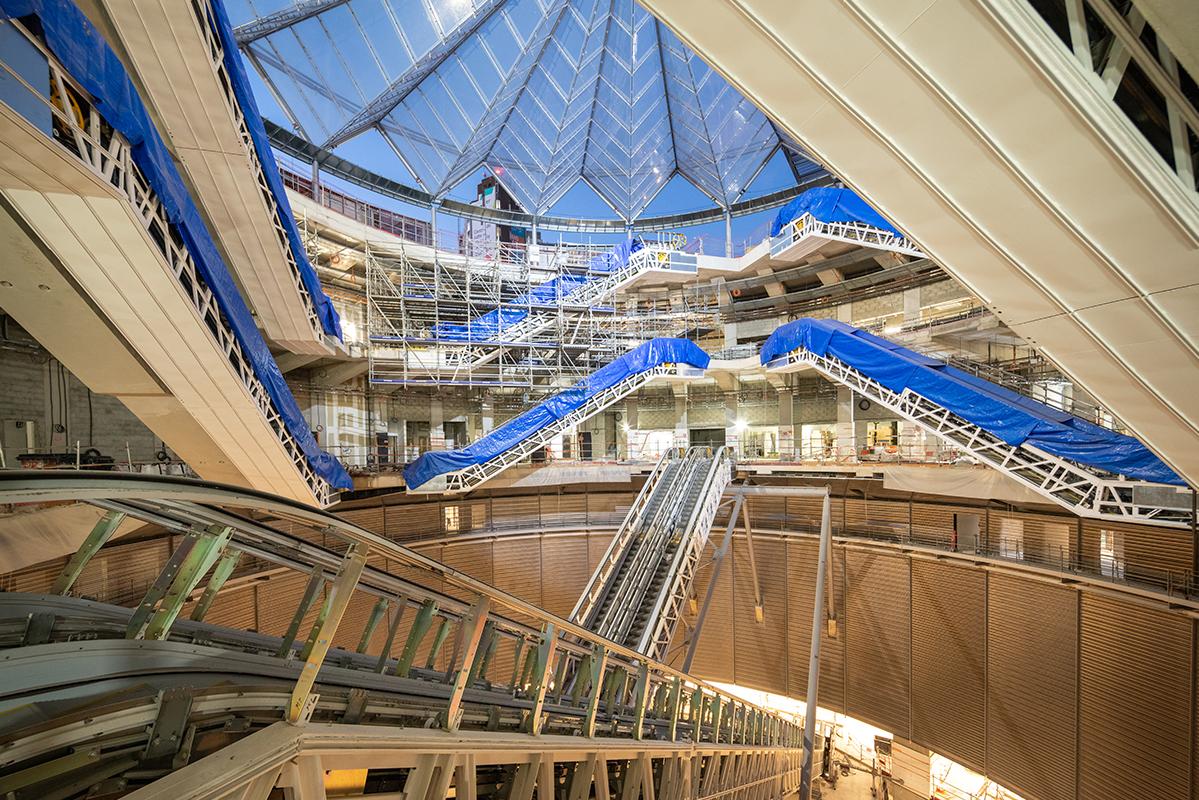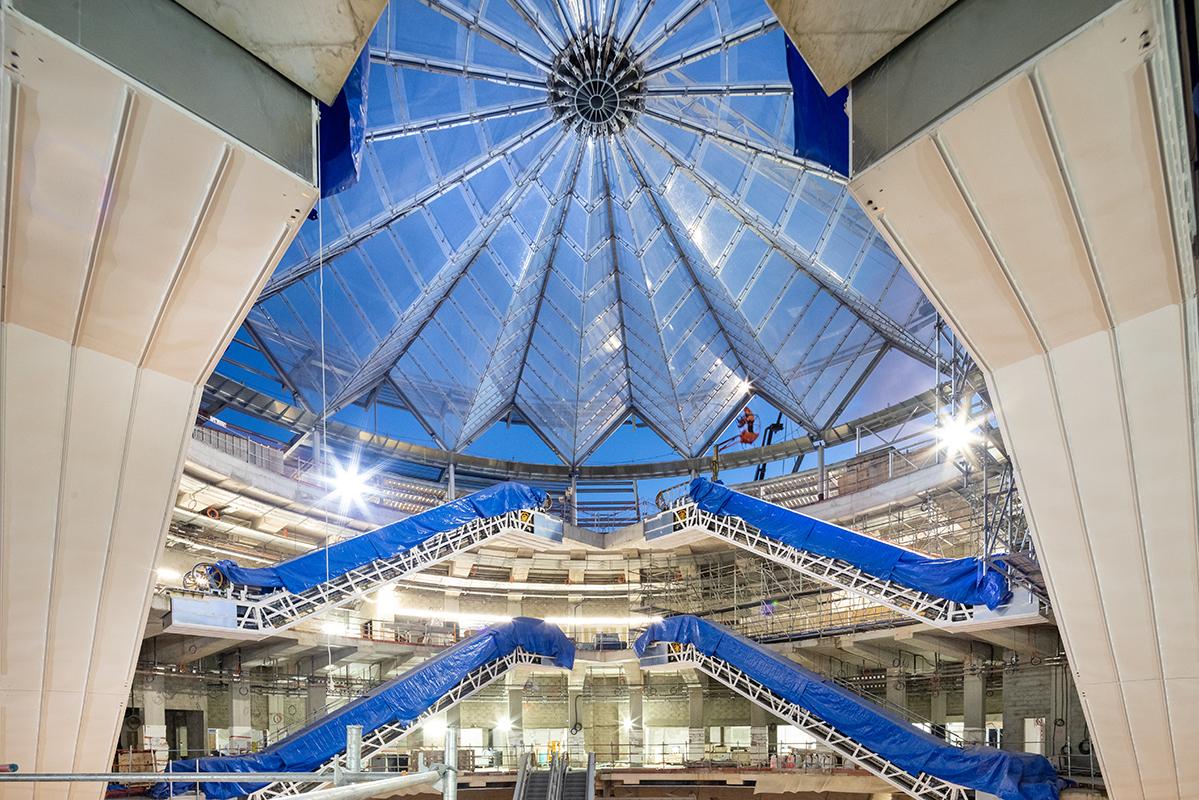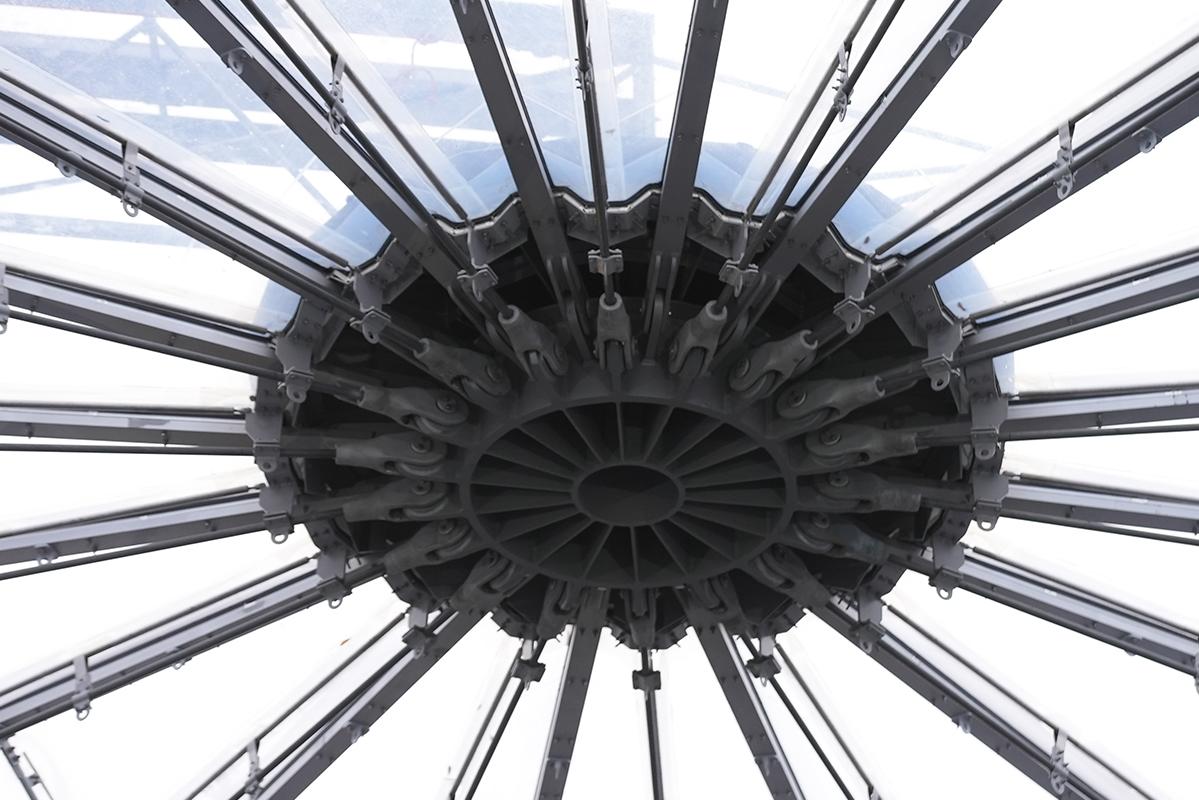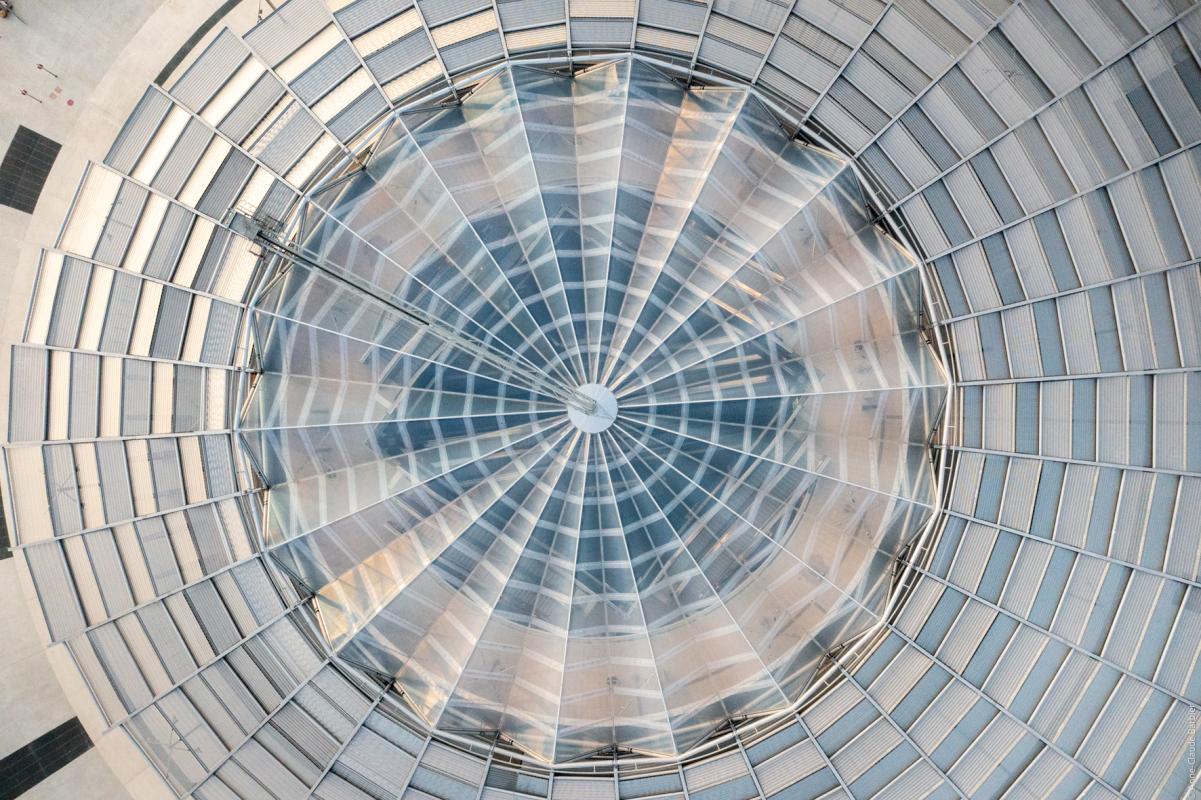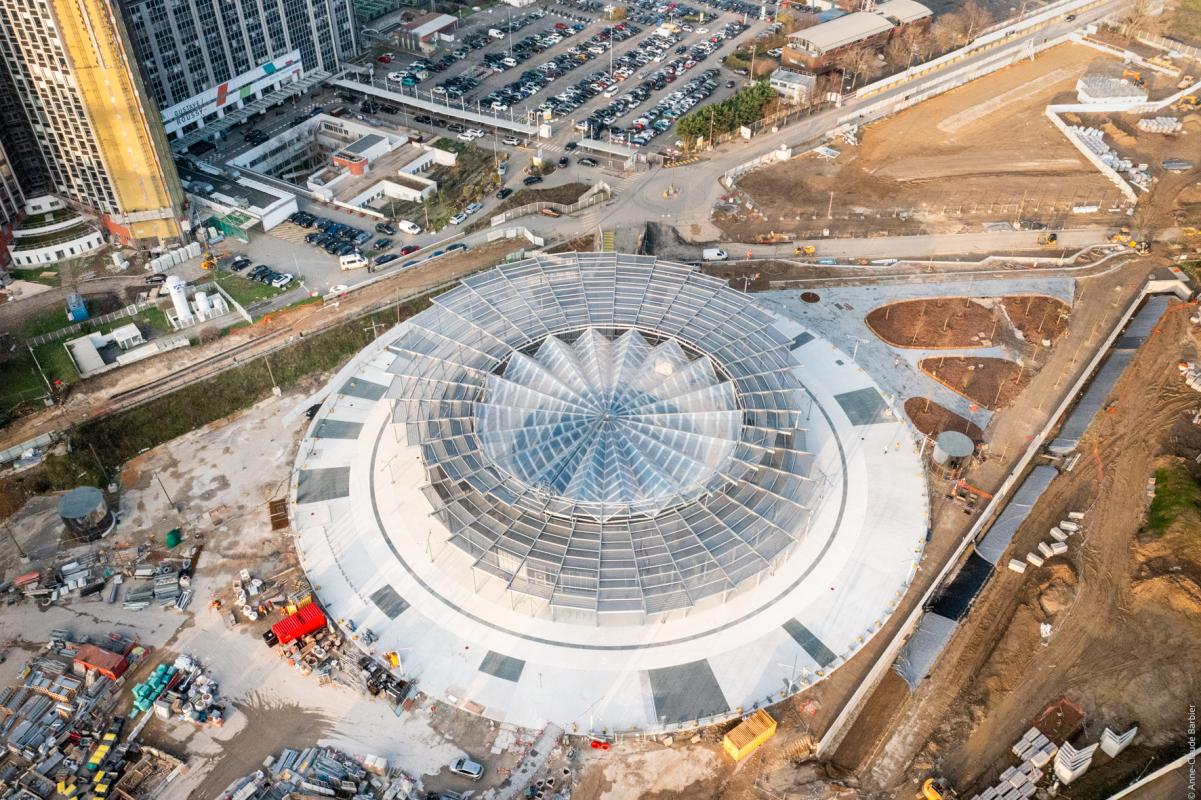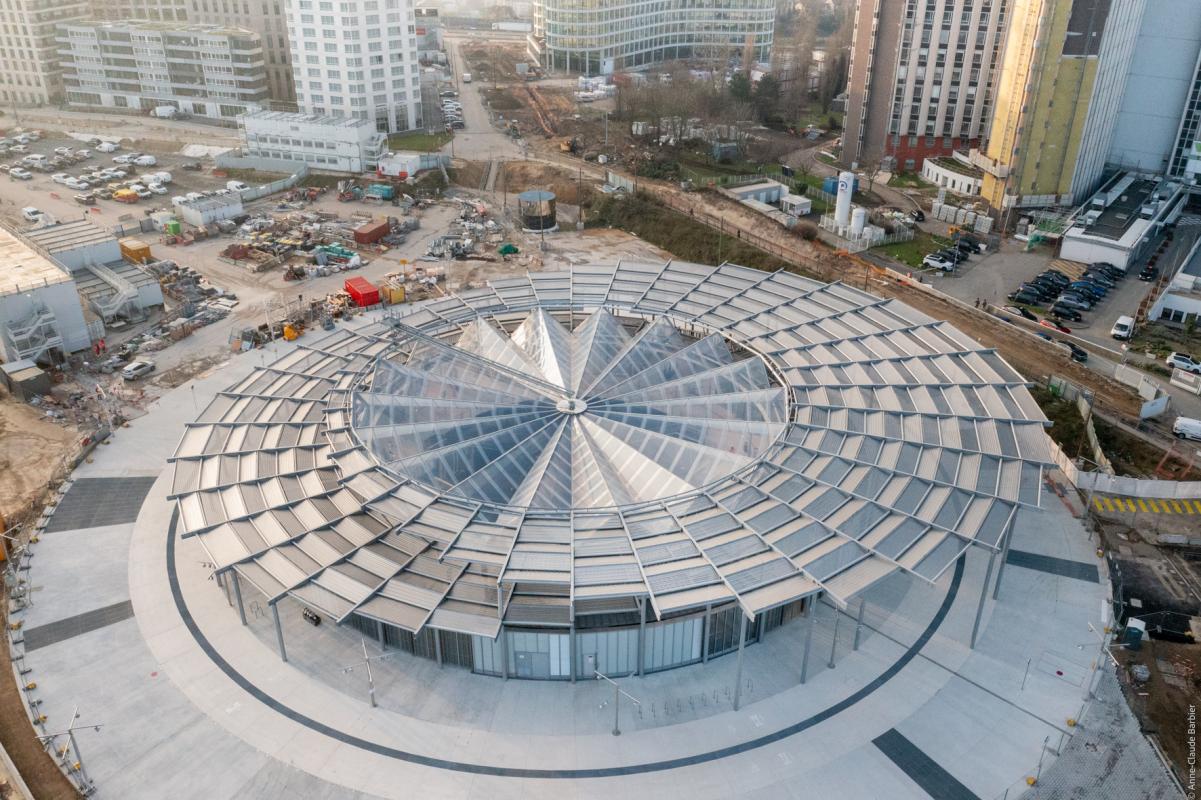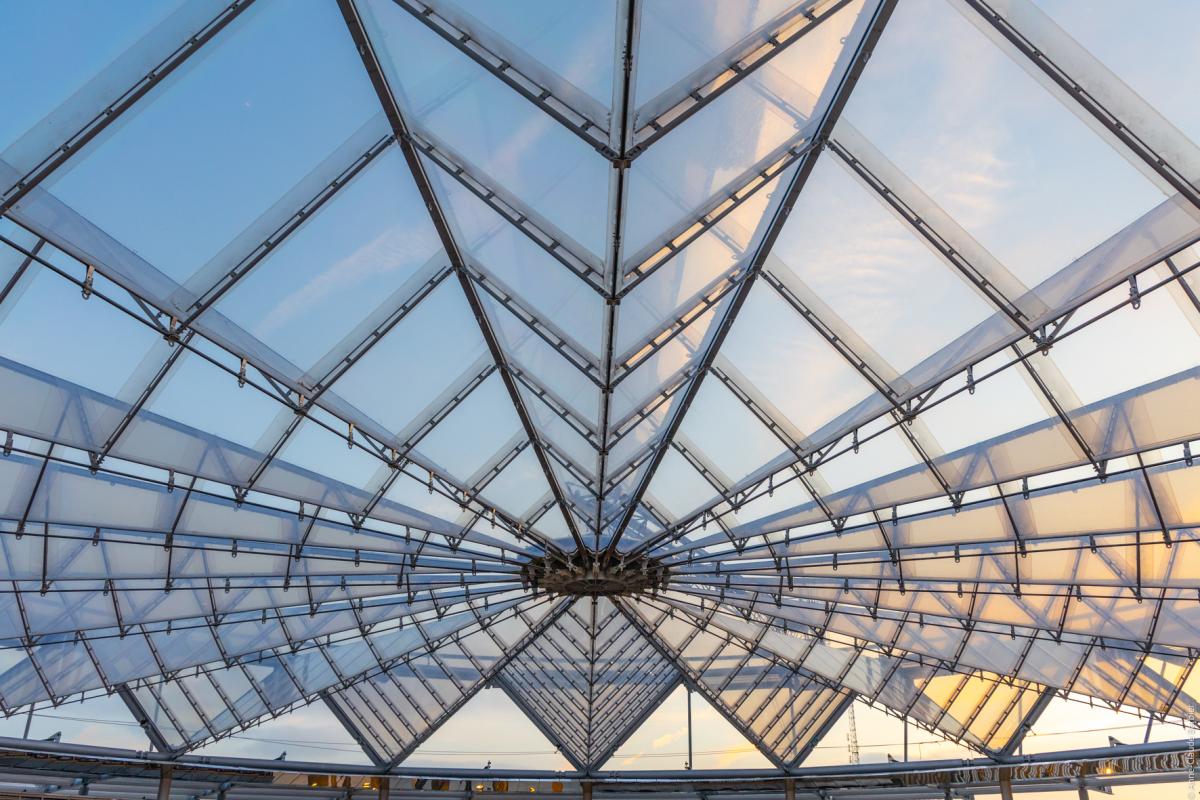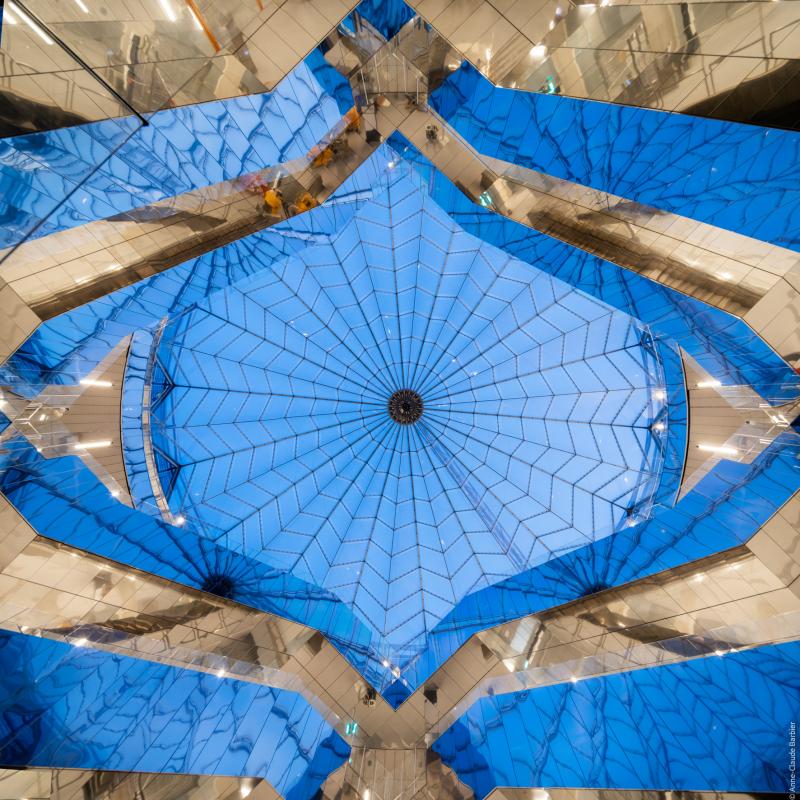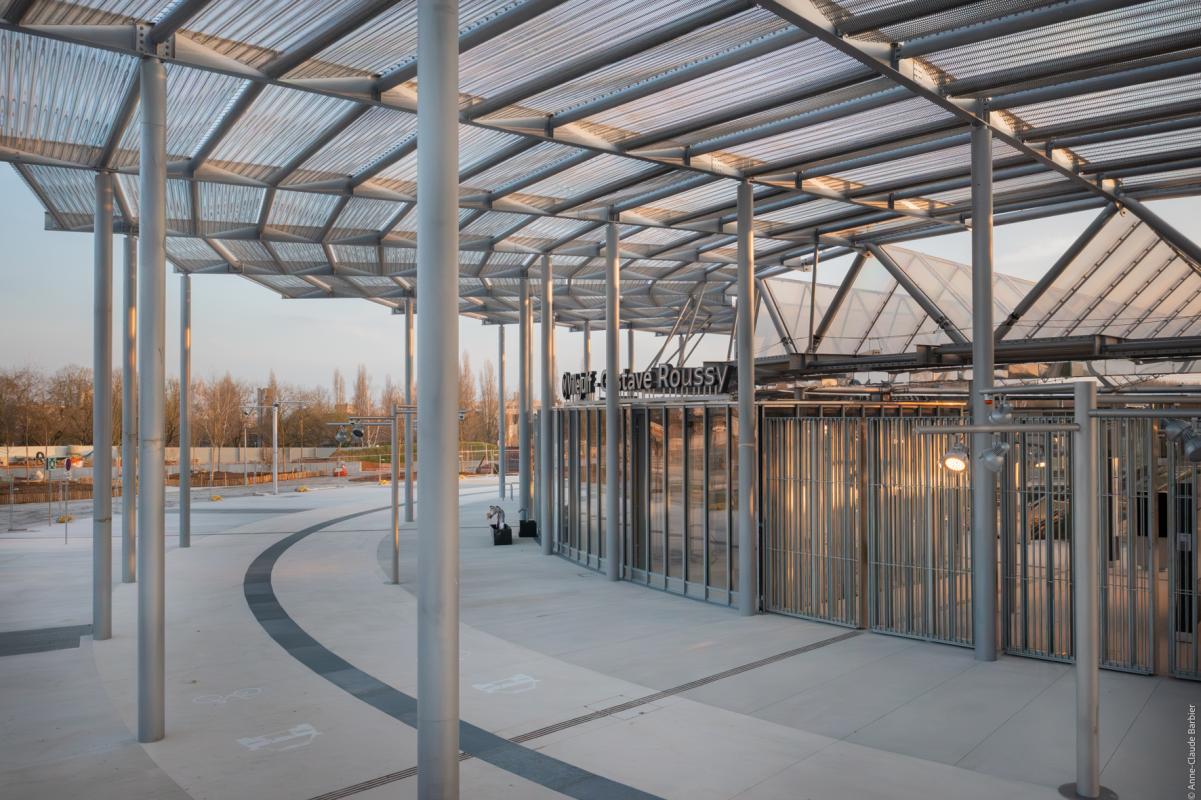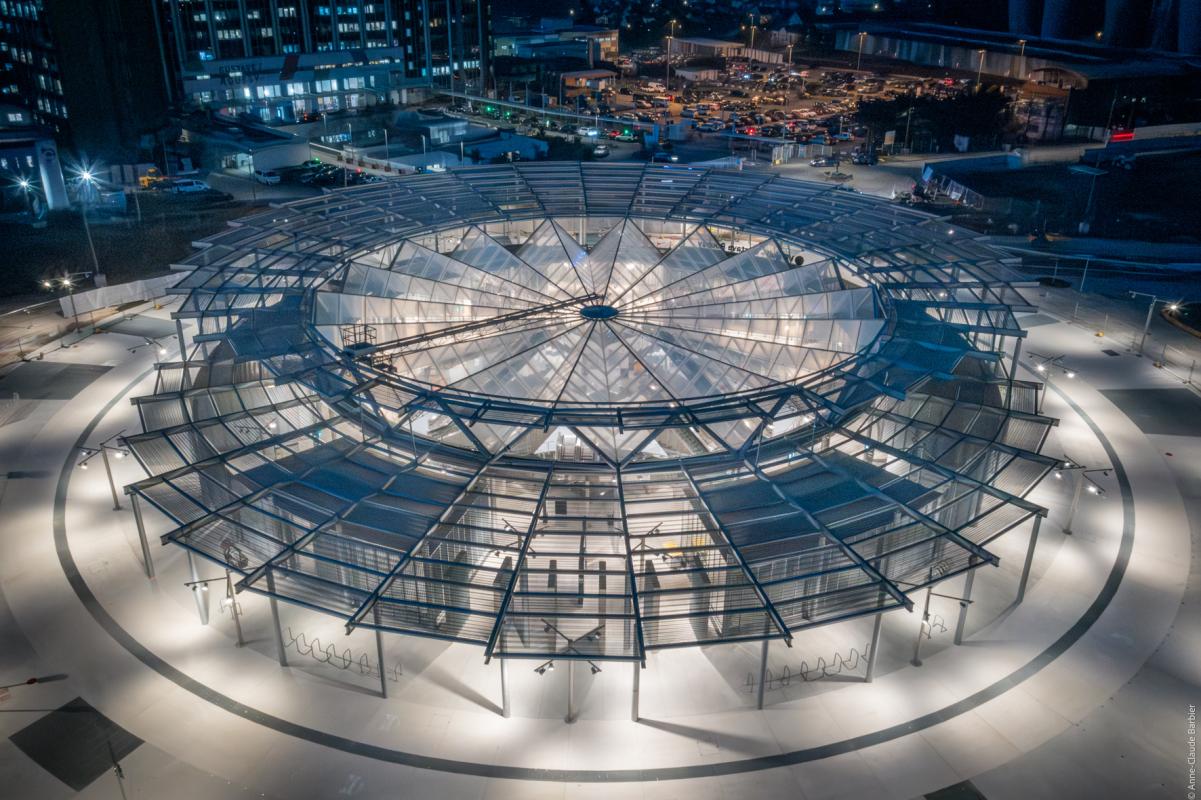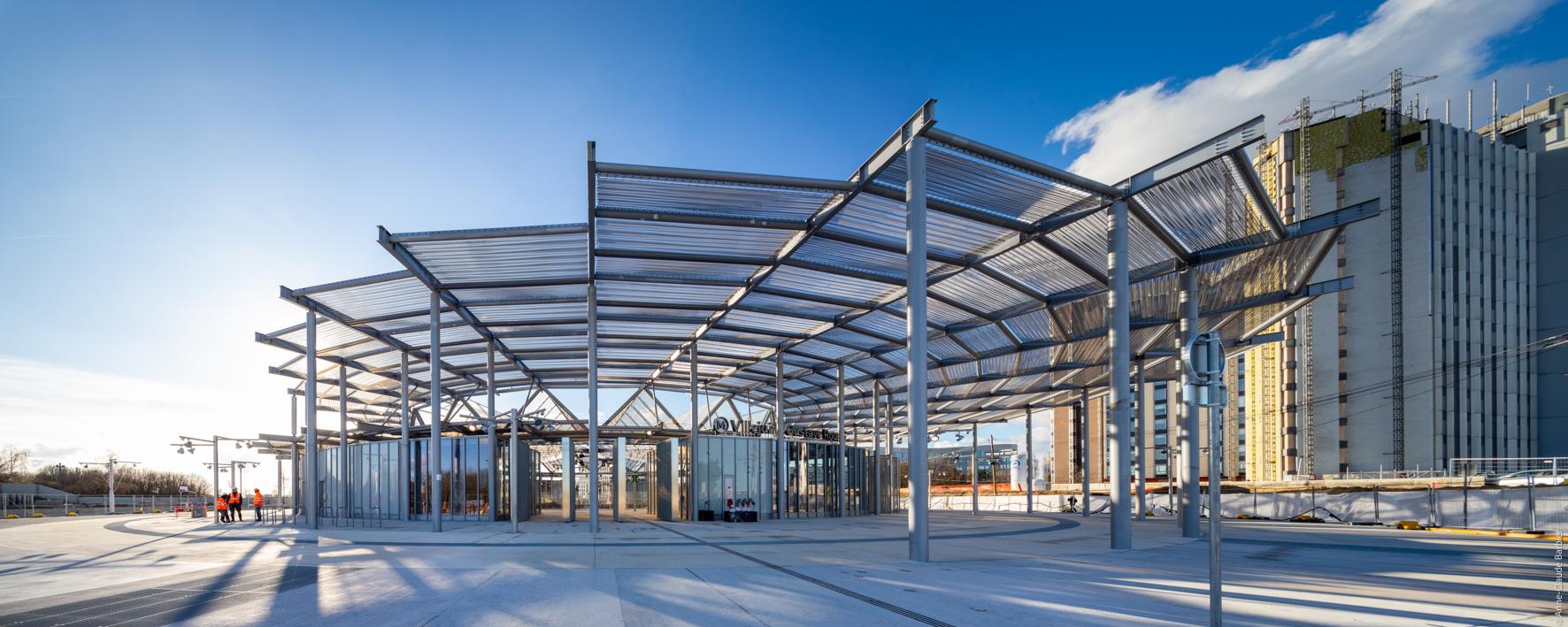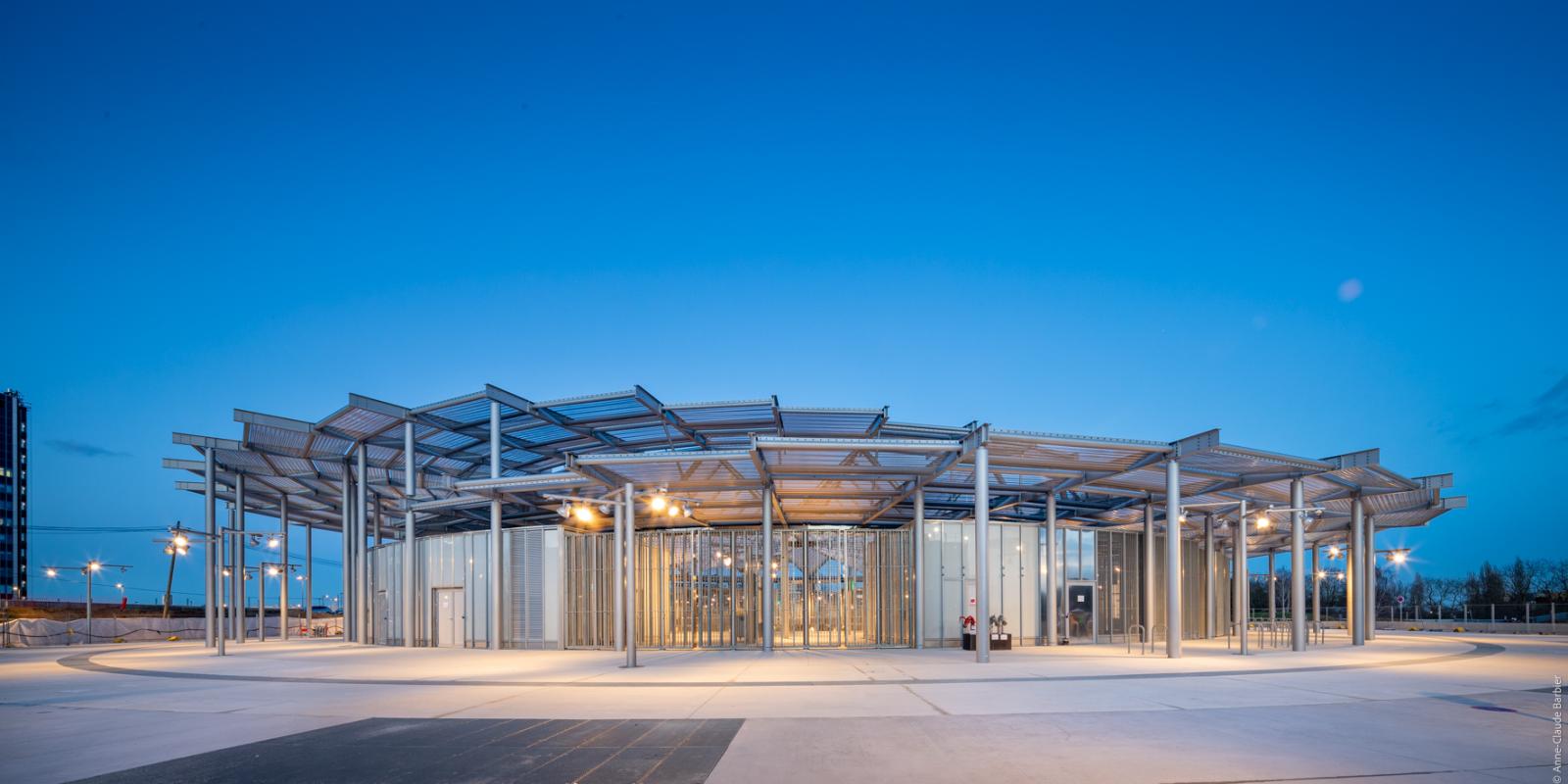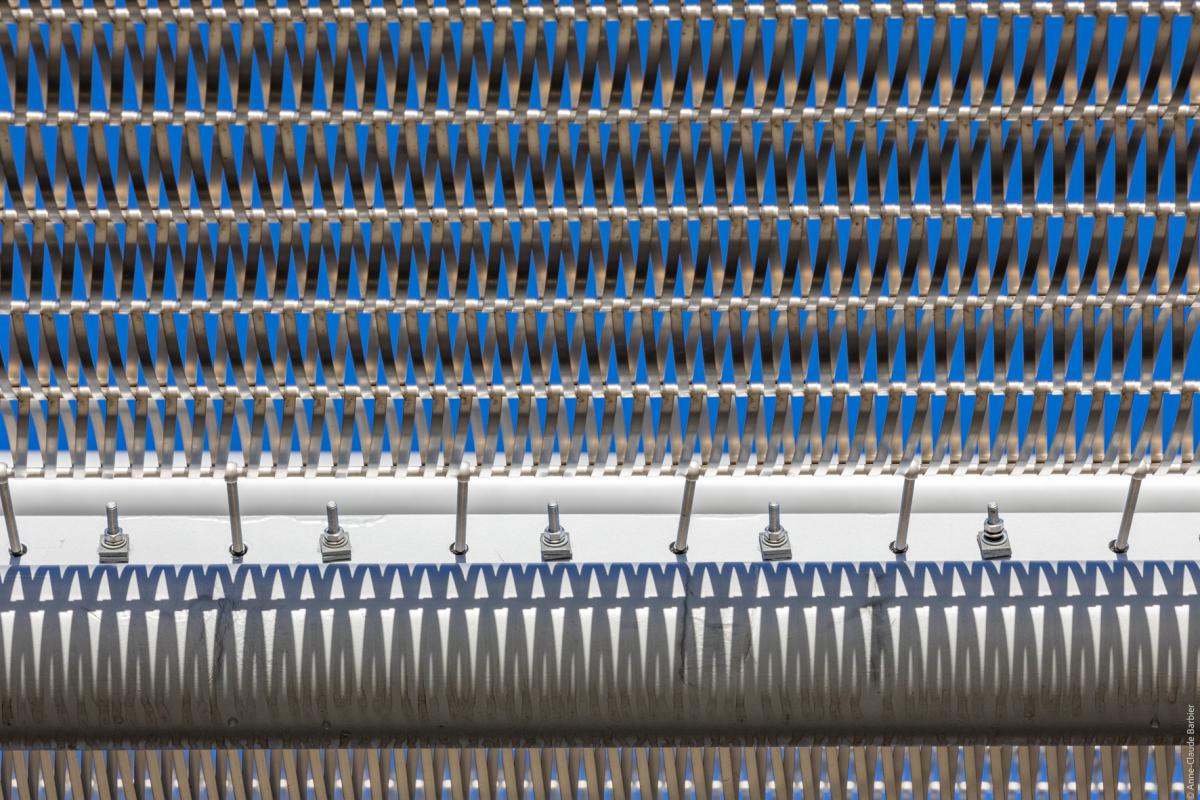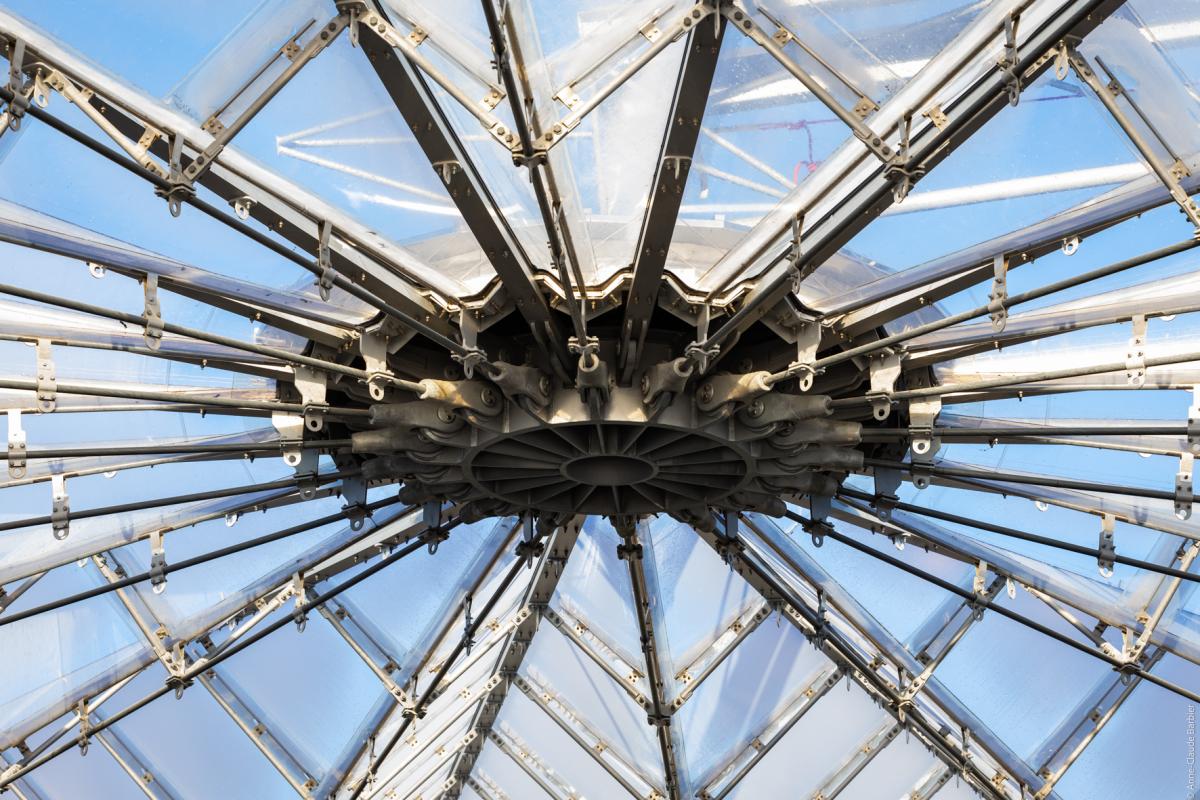Gare de Villejuif - IGR
Construction of the Villejuif–Institut Gustave Roussy station for the new rapid transit system, Grand Paris Express
Located at the highest point of the Longboyau plateau, in the Hautes Bruyères park, the Villejuif–IGR station is built 50 metres underground, making it one of the deepest transport infrastructures in France. It will service the Campus Grand Parc public development zone and the Institut Gustave Roussy, which is Europe’s leading cancer treatment centre. Situated on the suburban railway’s Line 15 Sud, which will link the stations of Pont de Sèvres and Noisy-Champs, the new future station will also ensure the connection with the extended Line 14, with over 100,000 estimated daily passengers.
An important station on the Grand Paris Express network due to its location and role as a hub between the future metro lines, the architecture of the new station demonstrates the project’s aim to connect and unify the spaces around it. The station is both naturally ventilated and naturally lit. In direct contact with the platforms, the large central void and balcony walkways are open air and bathed in natural light. This arrangement enables one of the feats of this infrastructure, that of not requiring heat and smoke extraction in the central shaft.
The station is covered by three roofs. A transparent circular central roof provides protection from the rain while allowing fresh air in from the sides. This roof is composed of a peripheral beam on which is fixed a collection of tie rods and cables linked to a central hub, the ‘eye’ of the station. On these cables are stretched elements in ETFE (ethylene tetrafluoroethylene), material chosen for its qualities of high transparency, lightness, resistance and fineness. Two other roofs, of non-concentric disks positioned at different heights, cover the station. Like awnings, these latter roofs extend out into the forecourt to mark the presence of the station while also providing shade for travelers. They are composed of strips of coiled stainless-steel mesh, stretched between radial beams.


